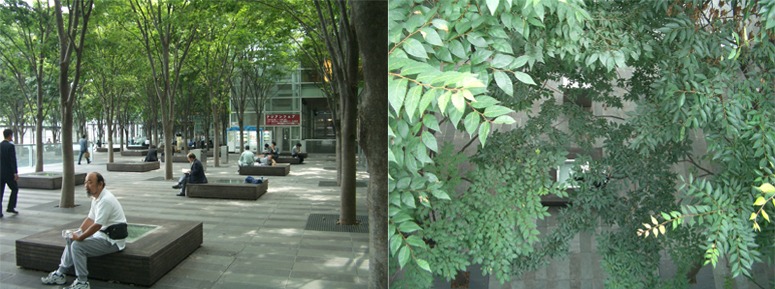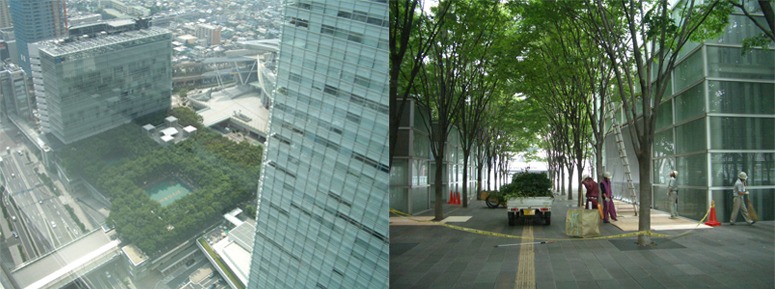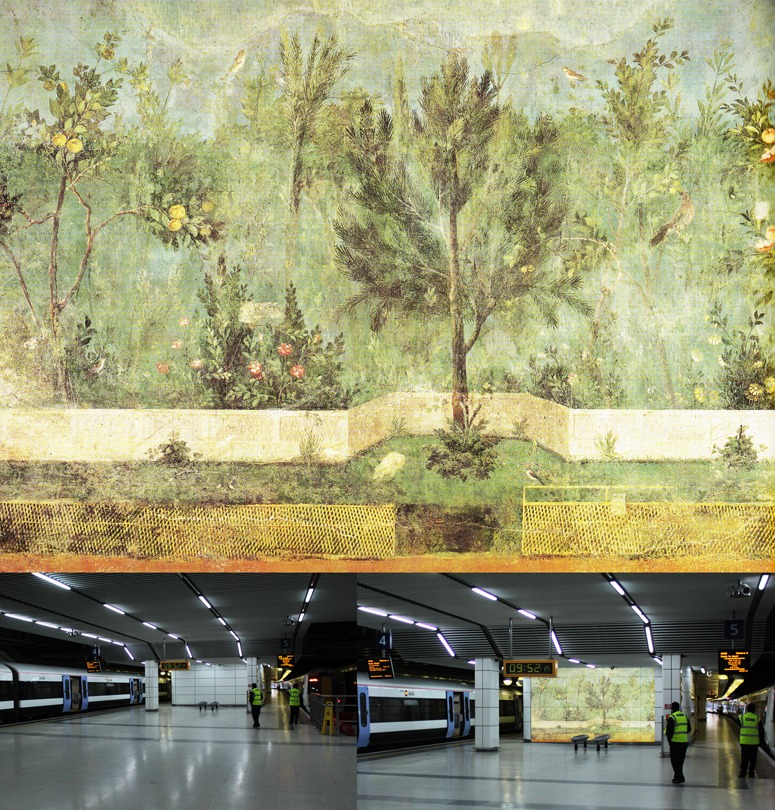‘Smithfield is renowned for the ghostly late-night movement of animal carcasses and more recently for the early-morning traffic of displaced revelers. Adding to the mix is this new internal garden space, the Garden of Disorientation’. I went to visit the garden on a really hot day in the course of a long cycle ride to visit other Chelsea Fringe projects. Suffering from heat disorientation, I found this intriguing space blessed me with orientation, as did a delicious drink. Deborah Nagan, of naganJohnson, designed the Garden of Disorientation for the 2012 Chelsea Fringe. The Garden of Disorientation is at 59 Charterhouse Street, Smithfield, London, EC1M from 19th May to 10 June 2012. Deborah is a graduate of the MA Landscape Architecture at the University of Greenwich. The Modern Garden Company was the main sponsor and supplied the excellent garden furniture: it is tough, stylish and street-worthy.
There are lots of reasons for wishing the Chelsea Fringe every success: it makes London an even more exciting city; it confirms London’s role as the world’s garden capital; it creates opportunities for landscape architects to show what wonderful things they can do for the city; it lets sponsors do really good things with their marketing budgets. We have many helpful suggestions!
So COME ON EVERYONE: the Chelsea Fringe has 100 projects in 2012: LETS MAKE IT 1000 PROJECTS IN 2013. Anyone unlucky enough not to be in London from 19th May to 10th June 2012 can do the London Gardens Walk. It is open on every day of every year.
Category Archives: Landscape Architecture
London Gardens Walk eBook: a free gift for Gardenvisit.com readers & the Chelsea Fringe Festival
To celebrate the start of the first Chelsea Fringe Garden Festival, Gardenvisit.com is giving away free copies of the London Gardens Walk eBook during the weekend of 19th to 20th May. It is in Kindle format and can be downloaded from any Amazon website. If you don’t have an eReader you can download an app for your Mac or PC from the Amazon site. Comments, or, better, reviews on the Amazon website will be welcome. There is also a version of the gardens walking map on Googlemaps. It aims to walk you through about 5000 years of garden history by seeing London gardens and parks and objects in the British Museum. Does the world have another city with so much garden history on view?
Download London Gardens Walk eBook from Amazon UK
Space and place
Famous Danish Urbanist Jan Gehl after a nine month study of central Sydney in 2007 called for the addition of three new public squares along George Street:
“His report paints a picture of a city at war with itself – car against pedestrian, high-rise against public space. “The inevitable result is public space with an absence of public life,” he concludes.
His nine-month investigation found a city in distress. A walk down Market Street involved as much waiting at traffic lights as it did walking. In winter, 39 per cent of people in the city spend their lunchtimes underground, put off by a hostile environment at street level: noise, traffic, wind, a lack of sunlight and too few options for eating.”
If the City of Sydney was to implement his vision how would the addition of public space improve the perception of place in Sydney?
The City of Miami is also feeling the lack of a public centre. In considering the attributes of good public squares they describe a few of the most successful spaces in the US, including Union Square and Madison Square.
Feel free to nominate your favourite public square and tell us why it is so good!
Who is carrying forward Britain's landscape design tradition?
Some years ago now I visited Japan – a country in which I had previously lived for a good many years – in order to write an article for Landscape Architecture Magazine. It was 2004, and ASLA had given its Design Award of Merit to Saitama Plaza, a collaboration between Peter Walker and Yoji Sasaki, who had kindly agreed to an interview.
Sitting in his office in Osaka he reminisced on their first encounter: a meeting between teacher and student, as Sasaki was then attending the Department of Landscape Architecture at the University of California at Berkeley, where Walker was Head of Department. He was offered a challenge: Japan had a remarkable landscape tradition, but who was carrying that tradition forward, interpreting and reinventing it for the late twentieth century? With the benefit of hindsight perhaps that was one of the defining moments in Sasaki’s career. You can judge for yourselves here.
Our interview over, he returned to his earlier topic but this time turned the tables on me. Who in the United Kingdom was carrying on the grand landscape tradition of Capability Brown, et al? For him, and perhaps for many others, this represented the zenith of British landscape design.
I have pondered his question ever since then and it is one that I pose here.
Laser hologram projection of dancing girls at Canary Wharf Underground station
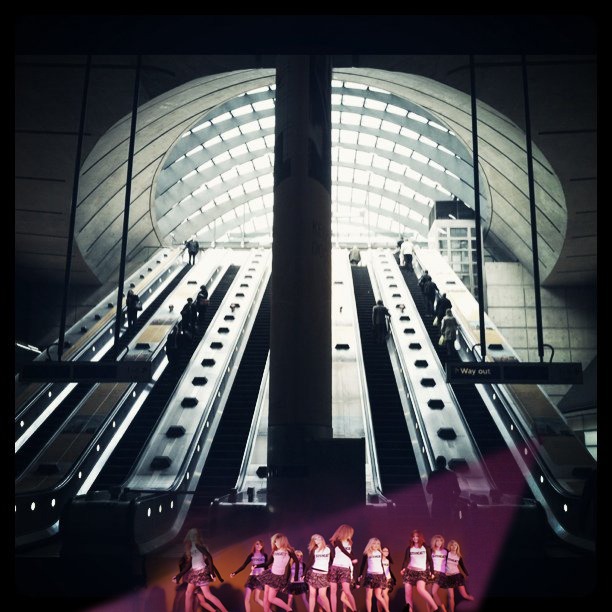 London Transport need not worry about these girls obstructing the flow of communters from their suburban pads to the Canary Wharf money factory. They are a holographic projection into a thin cloud of disco fog, intended to give the salarymen and salarygirls a reminder of their next escape to Ibiza. [Nor do London Transport need to sue me for not having had a license to take the photograph: it is a simulation.] The troupe have decided to call themselfes the Flowers of Canary Wharf and are planning a performance for the 2012 Chelsea Fringe Garden Festival.
London Transport need not worry about these girls obstructing the flow of communters from their suburban pads to the Canary Wharf money factory. They are a holographic projection into a thin cloud of disco fog, intended to give the salarymen and salarygirls a reminder of their next escape to Ibiza. [Nor do London Transport need to sue me for not having had a license to take the photograph: it is a simulation.] The troupe have decided to call themselfes the Flowers of Canary Wharf and are planning a performance for the 2012 Chelsea Fringe Garden Festival.
London's Roman Palace Garden at Cannon Street Station
‘I am the station manager. Did you know that this is a private place and you are not allowed to take photographs?????’.
‘No. I thought it was a public place. Please can you show me the sign which says “No Photography”‘
‘There isn’t one. Do you have a sign in your house saying “No Photography”?????’
‘No but there is a difference between a private house and a ………..’
I could not finish the sentence because he interrupted me to say ‘I could call the police’. I asked him not to interrupt and made 3 more attempts to complete my sentence. It could not be done, so I ended the conversation with the remark that that ‘If this is how “station managers” waste their time it is no surprise that National Rail has operating costs way above the European average. It also has lower standards – and the staff are often impolite’.
No doubt he could have given me the Nuremberg defence ‘I was just following orders’ and to show I bear no personal grudge I have decided not to bill Network Rail for the imaginative proposal, above, for using his blank wall as a place on which to project illustrations of Roman Palace gardens. He should also install a Triclinum and train for the more rewarding job of serving Roman delicacies to customers suffering psychological damage from their experiences with London’s rail system.
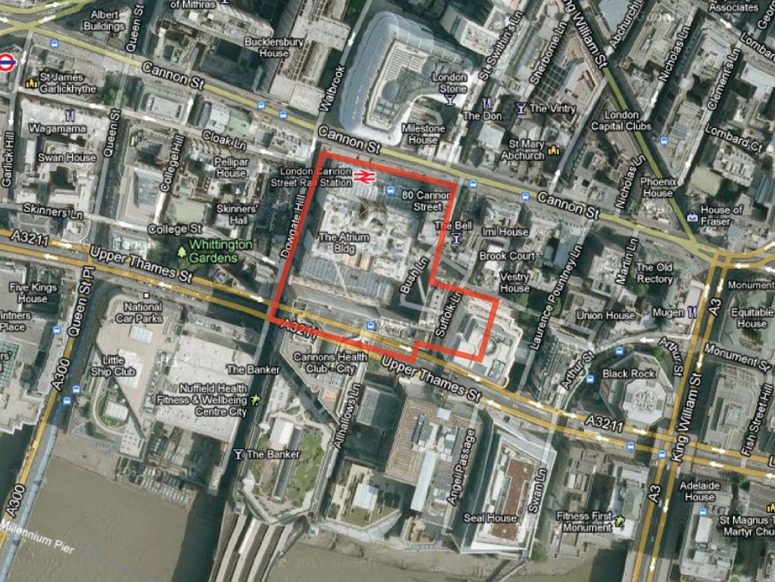
The site of the Villa and Palace Garden of London's Roman Provincial Governor is now the foyer of Cannon Street Station




